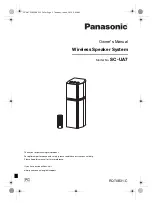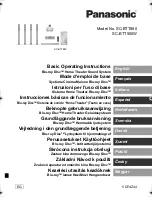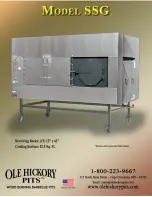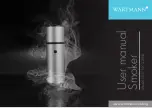
Legatia SE Carbon User’s Manual
©Hybrid Audio Technologies
Page 31 of 30
increases significantly at low frequencies, and is considerable in larger midbass and subwoofers. An
excellent use of time correction would be to delay the smaller Legatia SE Carbon midbass and
tweeters with respect to the larger subwoofers, so that the low frequency delay of these drivers is
synchronized in the time domain with the output of the midbass and treble frequencies.
Scenario 3
The final scenario is time alignment between pairs of drivers. When employing multiple drivers in
order to achieve a unified listening experience within a vehicle, it’s usually a requirement to install the
drivers at physically separated locations; for example, your midbass may be located in the doors, and
the tweeter may be located in the dashboard or a-pillar. In order to compensate for this, you might
choose to selectively delay certain speakers in the installation so that all of the tones reach your ears
at the same time (note that as previously alluded to, time alignment of your tweeters would be
rendered virtually useless).
Amplitude Equalization
An excellent use of today’s dual-mono equalizers and advanced digital signal processing is the ability
to equalize amplitude anomalies between speakers and sets of speakers installed in a vehicle. In a
vehicular installation, the frequency response of drivers can sometimes be manipulated for the
betterment of the system using independent left and right amplitude adjustment. Virtually any good
car audio system can be made better with judicious use of a minor amount of equalization. And while
equalization will not cure phasing anomalies in a car, usually the product of vehicular mechanics, they
can certainly be helpful in fine-tuning the system to your own personal taste or in the quest for
playback accuracy to the original musical composition.
One important consideration of amplitude equalization (also known in some circles as “amplitude
alignment”) is the ability to tune those frequencies above about 500 Hz that are not completely
affected by time correction. The very best vehicles have some sort of amplitude equalization
between the left and right speakers to account for IID and HRTF. After your Legatia SE Carbon
system is installed, you may wish to attempt some minor amplitude equalization between the left and
right channels to achieve a more stable image that is not frequency dependent, or perhaps to improve
image placement or stage coherency.
Acoustic Treatment
A considerable benefit can be made to any mobile audio system with the select placement of acoustic
treatments. The purpose of using acoustic treatments is to reduce the amount of reflected energy in
the hostile automotive environment, and hear more of the direct sound being emanated from the
speaker. It is akin to the signal to noise (S/N) ratio in a piece of electronics, where the signal could be
considered the direct energy coming from the speaker, and the noise could be considered the
reflected waves off of nearby surfaces, such as windows, hard center consoles and door panels,
windscreens, and etc. A word of warning though: there is a fine line between too little and too much
acoustic treatment; just as some vehicles can benefit from some selectively applied treatments, there
is a point where the vehicle can begin to approach “semi-anechoic” conditions, and lose its liveliness,
which is not ideal. Reflections are all around us, and are a part of our day-to-day lives. It is our
opinion that some lateral reflection is a good thing; it helps to establish stage boundaries, and gives
the recoded playback and more visceral and “believable” sound.
Summary of Contents for Legatia L4SE Stage VI Carbon
Page 1: ...Legatia SE Carbon Series Component Speakers Specifications Library Car Audio Reference Guide...
Page 13: ...Legatia SE Carbon User s Manual Hybrid Audio Technologies Page 13 of 30 Mechanical Drawing...
Page 19: ...Legatia SE Carbon User s Manual Hybrid Audio Technologies Page 19 of 30 Mechanical Drawing...





































